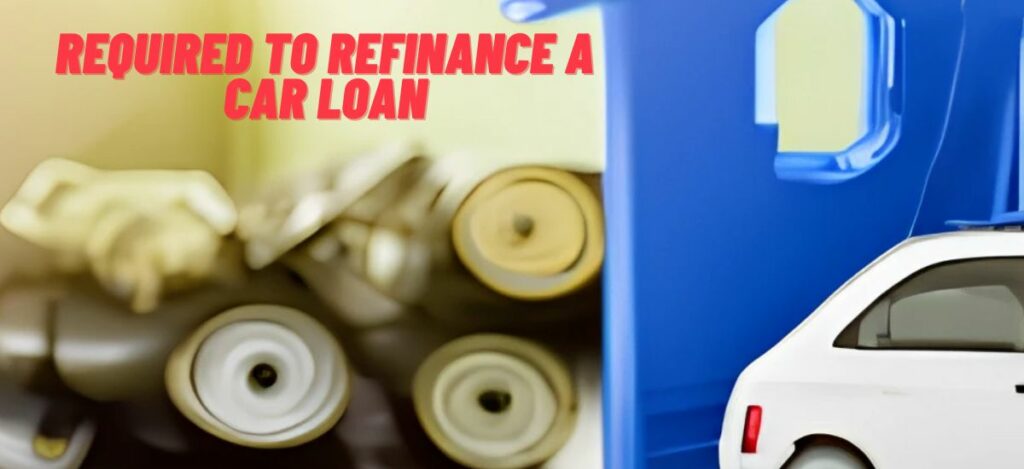
Refinancing a car loan can be a great way to save money on interest payments and lower your monthly car payments. However, it’s important to understand the steps involved in the refinancing process to ensure that you’re getting the best possible deal.
In this article, we’ll outline the six steps you need to follow to refinance your car loan successfully. From researching the requirements and calculating your potential savings to shopping around for the best deal and submitting your application, we’ll provide you with all the information you need to make an informed decision about refinancing your car loan.
Steps to Refinance Your Car Loan

Step 1 Check your credit score
Your credit score plays a significant role in determining your eligibility for refinancing and the interest rate you’ll qualify for. Before you start the refinancing process, check your credit score and credit report to ensure that there are no errors or issues that could negatively affect your creditworthiness.
Step 2 Research lenders and rates
Once you’ve checked your credit score, start researching lenders and rates to find the best deal for you. Look for lenders that specialize in auto loan refinancing and compare interest rates, fees, and terms.
Step 3 Calculate your savings
Use an online auto loan refinance calculator to estimate your potential savings based on the new loan’s interest rate and terms. This will help you determine if refinancing is worth the effort and if it will actually save you money in the long run.
Step 4 Apply for refinancing
Once you’ve found a lender with favorable terms, submit your application for refinancing.
Be prepared to provide personal and financial information, including your current loan details, employment information, and income verification.
Step 5 Get approved and review the offer
If your application is approved, the lender will send you a loan offer that includes the new interest rate, monthly payment, and other terms.
Review the offer carefully to ensure that it meets your needs and objectives.
Step 6 Sign the loan agreement and pay off your old loan
If you accept the lender’s offer, sign the loan agreement and any other required documents.
The new lender will then pay off your old car loan, and you’ll start making payments on the new loan.
Step 7 Enjoy your new loan terms and lower payments
Once the new loan is in effect, enjoy the benefits of lower interest rates, lower monthly payments, or shorter loan terms.
Remember to continue making on-time payments to improve your credit score and ensure that you don’t fall behind on your car loan payments.
Considerations to make prior to refinancing
Prior to initiating the refinancing process, ensure that it is a logical step for you to take.
Refinancing prerequisites: Each financial institution or lender has their individual set of standards that determine whether you qualify for refinancing. Confirm that you are not in a negative equity position and that your payments are up-to-date. Additionally, the remaining time on your loan is another requirement for eligibility. Lenders frequently require at least six months of payments made on your loan, and you should have a minimum of six months remaining as well.
Penalties for prepayment: Numerous auto loans incorporate provisions outlining the how and when of loan payments. Such provisions can include a prepayment penalty, which is a fee charged when you pay off your loan early. While not all lenders impose this penalty, it can impact your potential savings.
Remaining loan duration: If you are nearing the end of your current loan, it might be more beneficial to finish paying it off instead of investing time and money into refinancing.
Your financial well-being: One of the various factors that lenders assess is your debt-to-income ratio. The greater the debt you can pay off prior to applying for a new loan, the better your chances of receiving attractive loan terms. You may utilize an online calculator to help calculate your debt-to-income ratio.
What Documents Are Required to Refinance a Car Loan?

The lender’s requirements will vary, but here are some common documents you should have on hand before beginning the application process:
- Driver’s license
- Vehicle registration
- Proof of insurance
- Vehicle identification number
- Statement of loan repayment
- Proof of employment and income (pay stubs, bank statements, or a W-2 form)
Check with your preferred lender to see if any extra documents are required.
Conclusion
Refinancing a car loan can be a smart financial move if it leads to a lower interest rate or better loan terms. To refinance, you should start by checking your credit score, researching lenders and rates, calculating your potential savings, and applying for refinancing. Once you’ve been approved and reviewed the offer, you can sign the loan agreement and enjoy your new loan terms and lower payments.
However, before initiating the refinancing process, make sure it is a logical step for you to take by considering factors such as remaining loan duration, penalties for prepayment, and your debt-to-income ratio, and if you’re in the market for a car, whipflip.com is an online car marketplace that can help you confirm the details and ownership of the vehicle, and if you’re selling your car, their team of automotive experts can help you through the process, and you can sell your car quickly, easily, and safely.